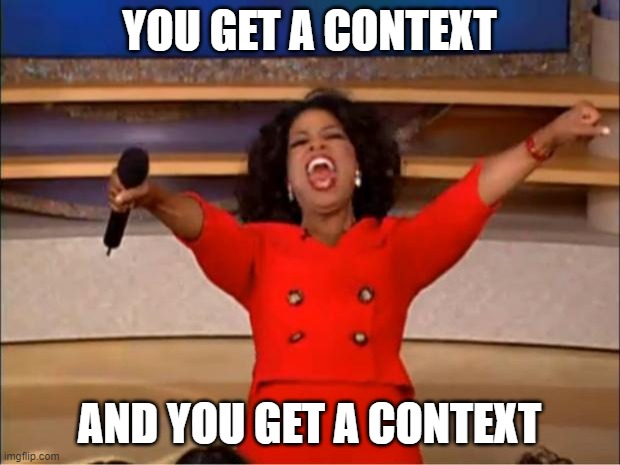When to Use a React Context vs a JS file
Everyone loves react contexts. A little too much in my opinion… You go into a new React project now and its like
Lets take a step back and talk about what a context is, when you should use one, and when you should just go with a simple JavaScript file instead.
TLDR: If you need to share data (more than a couple of props) between multiple levels of components (ex: grandparent to grandchild or deeper) or if multiple sections of the application need access to certain data use a context. Otherwise you can just use a normal JavaScript file to keep your data and presentation separate.
What is a Context
All a context is is a way to pass data through components without having to prop drill (pass props down to each component). This is great because rather than having to have your data pass through 4 components and remember to add it to each component we can just access the data we need at each level
When to Use a Context
Since its release a lot of people have been using contexts everywhere. Anywhere they are retrieving or manipulating data they are using a context instead of just a normal JavaScript file. Contexts are great but they are also a good amount of overhead and not always necessary. If you are not passing data more than one level or using data globally you do not need a context. Just use a normal JavaScript file. Now I know some of you are saying “but what if we need that data later why not just make it a context now?” and the answer is because you don’t need to. Making something a context later is very easy to do and can be done if you need it but not every parent component needs a context. not every grandparent does either. Not all grandparent components share data with the children.
Popular Use Cases for Contexts
User access information (authentication)
Theming
Grandparent to grandchild data sharing
Global State Management

